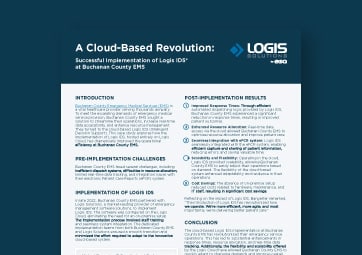Imagine you’re an architect tasked with designing a 10-story building. Each floor houses a different business, and each business has its own unique set of regulations and requirements to meet before it can open.
For example, the bakery needs food safety permits. The research lab needs special ventilation for hazardous materials. The kickboxing studio needs extra soundproofing to avoid disturbing the yoga studio below. And the doctor’s office on the ground floor must follow strict medical facility guidelines.
This building can be completed only by knowing the requirements and following a specific order during construction. It starts with a strong foundation, then gradually adds each floor; the top floor can’t open before the first floor is built. Success depends on the architect’s master knowledge, collaboration from outside agencies, and a healthy dose of patience.
This metaphor perfectly explains how patient registry compliance works and why it’s worth waiting to get the details just right.
“At ESO, we are partnering with our hospitals and regulatory organizations to ensure that we are improving community health and safety through the power of data. As your vendor, we are working diligently with regulatory organizations to which you must submit your data. These organizations can update their data annually. We are collectively working together to ensure that hospitals can accurately collect data on time to allow for successful submissions of trauma records. Compliance is a team effort internally and externally to ensure the data to be collected is the correct data being sent. We are all essential key players in data quality and integrity.”
– Julie Hollan, MSN, RN, Product Manager – Registry Compliance, ESO
Laying the foundation: National standards first
Annual compliance includes coding updates from national, state, regional, and other entities that together, create the annual compliance customization updates.
Before your trauma registry software can be updated with the annual trauma standards, ESO must receive the foundational data standards from the American College of Surgeons (ACS) first. This toolkit includes:
- Technical Specifications – A document that outlines the requirements for your software to work as expected. As your vendor, ESO is responsible for ensuring your software can to accurately, efficiently, and seamlessly collect and submit trauma records.
- The Software Development Kit (SDK) – The technical toolkit for software developers to begin coding updates.
- The Data Dictionary – This is the guiding documentation hospitals use to abstract trauma records. It details every data point your registry must collect, the values each field can hold, and how data must be formatted. The ACS provides the National Trauma Data Standard 2025 Data Dictionary.
The ACS typically releases these essential components mid-year, setting off the national compliance update process. Without these files, the process cannot begin, delaying foundation construction.
Creating the structure: State and regional steps
Once the ACS national requirements are in place, state and regional trauma systems release their own data dictionaries with specific requirements. These vary widely and can include new data elements, menu values, validation rules, and additional information for data abstraction. Most notably, data dictionaries detail the formats in which the data must be reported to your state or regional regulatory organizations.
ESO partners with each state and region to identify their changes and conduct a compliance review. Importantly, ESO cannot proceed with registry updates until each state, regional trauma system, or state trauma vendor formally approves their annual compliance update requirements.
Finishing each floor: Customization
With national, state, and regional compliance updates available, ESO develops specific updates based on compliance needs. Whether your trauma center is accredited, designated, and/or verified, your data submission must meet the requirements of the entities your facility is accountable to, like the ACS, American Burn Association, the state, region, and/or other regulatory organizations.
The Centers for Medicare & Medicaid (CMS) is also involved in registry compliance software updates. CMS releases new ICD-10 coding sets (PCS & CM) twice a year. ESO ensures that these coding updates are added to your registry product.
Abbreviated Injury Scale (AIS) is connected with registry compliance software updates too. AIS2015 was released on January 1, 2025, as the coding standard starting with 2025 admissions for the National Trauma Data Standard (NTDS) and Trauma Quality Improvement Program (TQIP).
Grand opening: Deployment
Once these updates are reviewed, revised, and ready, ESO deploys updates to each product with the capability for data collection and submissions. ESO Patient Registry is deployed into production, and hospital administrator users can configure their system accordingly. The ability to self-serve with a few clicks reduces downtime. Facilities may still need to handle some installation steps for legacy products such as ESO-DI, ESO-Lancet, and ESO-CDM. If you need assistance with these installs, reserve a time with ESO Support using the support scheduling link provided in your deployment email.
A key takeaway for those on the registry compliance journey is that each step depends on the one before it. Each building phase requires attention to detail, analysis, and collective approval of changes. If updates are delayed in one area, all areas risk delay. As your vendor, we partner with regulatory organizations to ensure data quality and integrity. Collectively, we can improve community health and safety through the power of data.
Why compliance matters
The annual compliance update process is critical to ensuring your facility’s data submissions meet standards established by national, state, and regional regulatory organizations. While the process includes many dependencies, every step is essential to ensuring your facility can submit the highest quality trauma data possible.
Trauma program leaders can focus on benchmarking and quality improvement initiatives with confidence while hospitals address accreditation and verification initiatives, all while collectively improving trauma care.
Visualize the compliance process
Here’s a simplified look at the full compliance lifecycle for facilities in states where ESO is the state vendor.
The following table outlines each step in more detail:
| Estimated Timing* | Order | Compliance Process Activities | Who’s Involved |
| June – Sept | Step 1 | ACS releases the national toolkit for the next calendar year | ACS |
| Step 2 | ESO analyzes the national files, develops software updates | ESO | |
| Step 2.1 | States and regions begin analyzing national files to inform their compliance changes | State/Regional Trauma Office | |
| Oct – Dec | Step 3 | States and regions submit their finalized data dictionary changes to ESO | State/Regional Trauma Office |
| Step 4 |
ESO begins analysis of state and regional changes to data dictionaries and technical files (XSD) Note, when ESO is not the State Trauma Office’s repository vendor, ESO must wait for receipt of the technical file (XSD) from the state vendor. |
ESO | |
| Step 5 | ESO deploys national updates | ESO | |
| Step 6 | Facilities install national updates (legacy) or receive automatic updates (ESO Patient Registry) | Facilities | |
| Dec – Feb | Step 7 | ESO completes analysis of state and regional changes and sends changes to state and regional contacts for approval | ESO |
| Step 8 | State and/or region reviews and formally approves changes | State/Regional Trauma Office | |
| Step 9 | ESO develops state and regional software updates |
ESO | |
| Step 10 | ESO deploys state updates and ESO deploys regional updates | ESO | |
| Step 11 | Facilities install state and regional updates (legacy) or receive automatic updates (ESO Patient Registry) | Facilities | |
| Jan – June | Step 12 | Facilities submit fully compliant data |
Facility/State/Region/ACS |
| Step 13 | Facilities celebrate success, then pull data and reports to inform benchmarking and performance improvement | Facilities | |
| Step 14 | Everyone prepares for the next annual registry compliance cycle | ACS, Facilities, ESO, state/ regional offices, partners, vendors, registrars…. |
*Estimated timelines are subject to change. ESO commits to providing transparent and timely updates to our state, regional, and facility partners as timelines evolve.
Less hassle for you
Keeping your trauma registry compliant means keeping up with changes across national, state, and regional standards — a process ESO manages with you. Whether you use a legacy registry product or already upgraded to ESO Patient Registry, ESO collaborates with partners to offer technical assistance and resources to ensure your registry stays in lockstep with evolving standards.
Every trauma registry vendor shares this responsibility, but ESO reduces the burden with ESO Patient Registry by applying updates automatically and keeping your registry up to date with minimal effort.
That means your hospital only has one requirement: Activate your compliance updates with the click of a button once your national, state, and regional updates are available.
Ready to upgrade?
Are ready to move away from manual updates? Visit the ESO Patient Registry page and fill out the Start My Upgrade form today.


